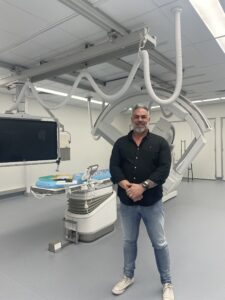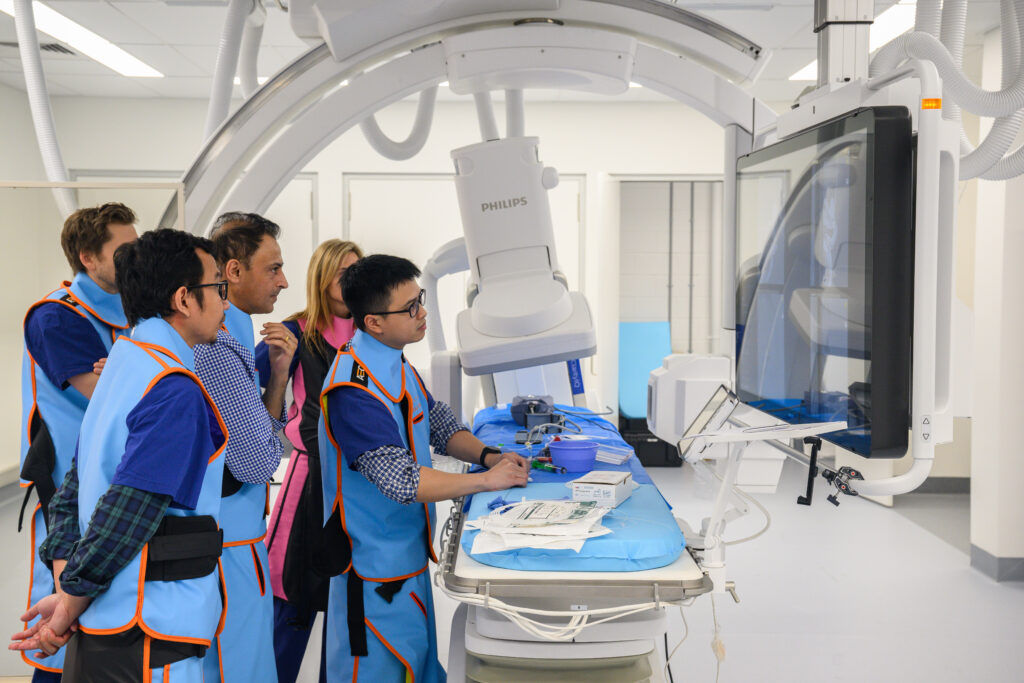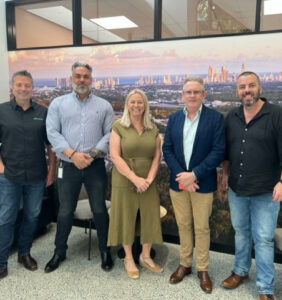
With a vision of the Gold Coast as a leading global centre for endovascular R&D and training, neurovascular device company Wallaby-phenox (Wallaby, phenox) has based its Vice President for international direct markets, including Asia-Pacific, Latin America and the Middle East, in a new office in the Gold Coast Health and Knowledge Precinct.
The US/Chinese/German-operated company will leverage recent investment by Doctors Hal Rice and Laetitia de Villiers in their world-first NeuTex Image-guided surgery and robotics training centre, in partnership with global medical leader Philips, to stage global expansion in treatments for stroke and other conditions.
 A 20-year-veteran of the medical device industry with a passion for the life-saving potential of neuro-interventional technologies, Wallaby-phenox’s Kirk Slater has never been more excited at the opportunity to save lives and reduce disability through minimally-invasive endovascular procedures.
A 20-year-veteran of the medical device industry with a passion for the life-saving potential of neuro-interventional technologies, Wallaby-phenox’s Kirk Slater has never been more excited at the opportunity to save lives and reduce disability through minimally-invasive endovascular procedures.
And he loves that he can achieve global impact from his adopted home on the Gold Coast.
“The Gold Coast is a great location to access the Asia-Pacific, but the unique value is the opportunity to work closely with NeuTex and doctors Rice and de Villiers, who I’ve known and worked with as leading innovators for 15 years,” Kirk says.
Originally from South Africa and having worked for both major and smaller MedTech companies in Australia and New Zealand, Kirk is relishing a return to a smaller company with a growing global reach, accelerated when Wallaby Medical, jointly based in the US and China, acquired German neuro-interventional leader phenox in April 2022.
Their portfolio of medical products now includes catheters, coil systems and flow modulation devices, with 5 R&D centers, 3 production bases, over 700 employees worldwide, and more than 350 global patents granted or pending.
“I like building things and being an underdog,” Kirk says.
“In this role, I have the opportunity to be creative and disruptive, and we need innovation if we are to substantially increase endovascular treatment for stroke over the prevailing protocol of clot-busting drugs, which unfortunately leaves some patients clinically excluded from treatment due to time-sensitivity and underlying conditions.”
Kirk stresses that it’s not a battle of drugs vs devices, but an opportunity to continue to evolve endovascular treatments to achieve broader reach by taking a ‘value-based’ healthcare approach.
“When considering treatment options and costs we want to be evaluating what one ‘quality life year’ is worth to the individual and society – stroke unfortunately still causes a lot of disability,” he says.

The neurovascular field has led the way in minimally-invasive image-guided interventions, treating strokes and brain aneurysms by feeding tiny devices such as coils and stents into the brain through fine catheters to repair blockages. The future includes treating patients with neurodegenerative conditions using implantable devices.

Beyond conditions in the brain, innovation in cardiovascular, peripheral vascular, spinal and renal treatments using catheters and devices present the opportunity to help many more patients.
“The Neurovascular device market is worth $4-5 billion worldwide, compared to the $60 billion global cardiology market, which shows the order of magnitude of patients that innovation in cardiology could serve.”
Kirk plans to grow a team of 6 based at Cohort Innovation Space, with the same number based across Australia within the next few years.
He’ll concentrate on opening up the Indian market and the broader Asia-Pacific region, as well as direct entry into Latin America – a big brief that requires long days and nights to accommodate different timezones.
Equally, he’s focused on what comes next – innovation in catheter designs that are thinner and more durable – and next-generation training, partnering with NeuTex and their technology partner BirdDog, an Australian ASX-listed company that provides high-fidelity video capture and software to enable remote proctoring.
“We want to be the first neurovascular device company to deliver truly global workshops via high-quality video links that provide realistic experiences for trainees in multiple locations at once,” Kirk says.
“One day we hope that will extend to using robotics to enable cross-border procedures, where expert clinicians can collaborate to treat complex cases.”